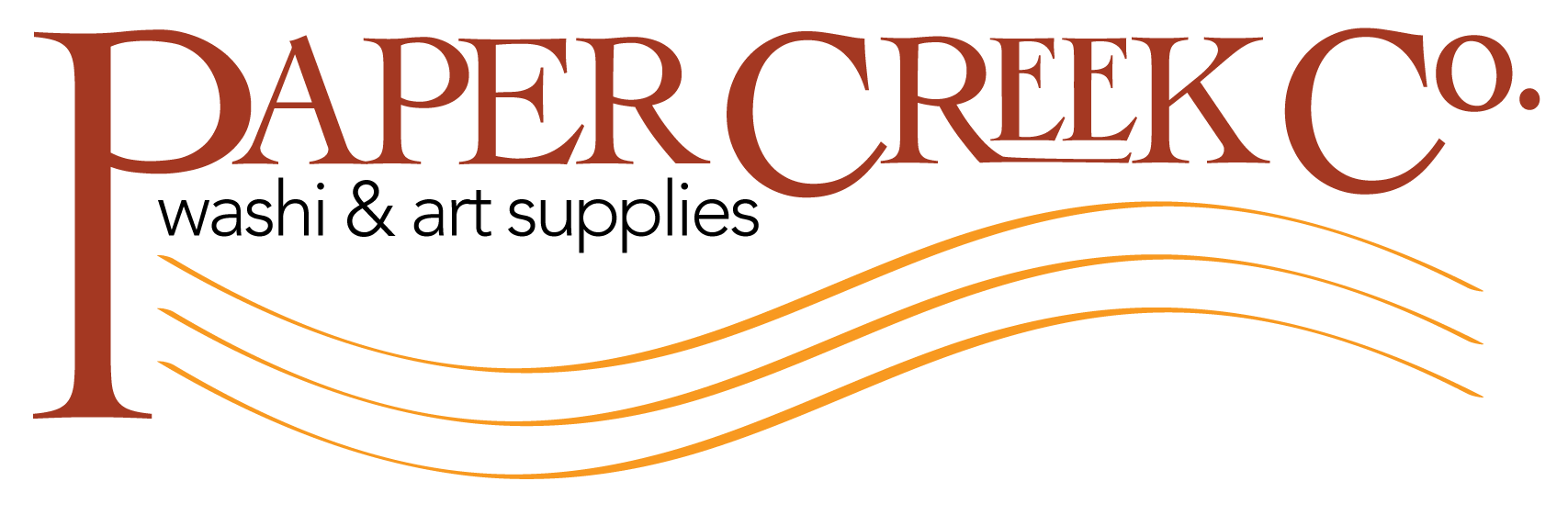Rice paper for artwork - If you search Google for “rice paper” chances are all the listings you see will be for the kind of rice paper used in cooking. In fact, that is the only type of paper truly made from rice.
The term rice paper as an art supply is a bit of a misnomer (but we still know what you mean!)
A possible source for the misnomer is from a strong kozo-fibre paper that was used to wrap rice, hence “rice paper”. Some sources suggest that the use of rice starch to size sheets of paper in China in the early days of paper production may have led to the name. The best explanation comes from Sukey Hughes, in her 1978 book, Washi: The World of Japanese Paper:
‘Rice Paper’ is the term the English-speaking West has used for the past fifty years or so to denote all oriental papers, including washi. This has been a terribly misleading name, for most Westerners now think that washi is made from rice, or at least believe that rice plays an important part in its manufacture. Actually rice has almost no place in Japanese papermaking. Sometimes a poor-quality paper is made from rice straw, also rice polish is sometimes added to the vat solution as a filler or to make the paper whiter, but even this is rare today. The ‘rice paper’ misnomer goes back to 1927, when a British government official mistook Japanese gampi-shi for another paper then popularly called ‘rice paper’, which it resembled. Sheets of both were very thin, translucent, and slightly brown in color tone.
The paper the official thought he was seeing was, most likely, the pith paper made form Fatsia papyrifera. Commonly referred to as the tsuso plant the paper made from it was called ‘tsuso rice paper’. Brought to England and the US by sea traders, the paper was used for making artificial flowers, lining hats, watercolours, and was even the first cigarette paper.
Sigrid Blohm, long-time employee of The Japanese Paper Place and their resident Fine Paper Specialist, offers some insight:
“I try to find out what the paper should look like, and how they would like to use it and make suggestions based on that. There are products out there called ‘rice paper’, and the term is used online and in some books on oriental painting, which is probably why some people continue to ask for it.
Sometimes people are actually looking for a paper that has fibre inclusions like our unryu papers….different kinds of washi are variations of what is being called ‘rice paper’.If a customer would like a paper for sumi painting, as an example, I suggest the sumi rolls as an excellent and economical practice paper.
For a step up in quality, and also handmade, I suggest Iwami, which comes in both a white and a natural. For a top grade paper on the thinner side Sekishu Banshi Tsuru is excellent, and nothing beats Seichosen Kozo for an absorbent, heavier paper.”
Our Washi Collections are a great option as each package contains samples, selected for a specific use, along with descriptions of the papers and a swatch sheet for future reference.

